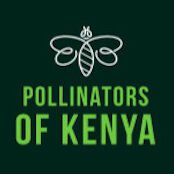From Bees to Butterflies: Tips for Small Farmers in Kenya to Create a Thriving Pollinator Habitat
Small-holder farmers in Kenya play a crucial role in the country’s economy and food security. However, many of these farmers face numerous challenges, including low crop yields and reduced income due to poor crop pollination. This is where pollinators come in, as they play a vital role in the fertilization of crops, which is essential for increased yields and improved quality. In this article, we will explore pollinator-friendly best practices for small-holder farmers in Kenya.
Introduction to Pollination and Pollinators
Pollination is the process by which pollen grains from the male reproductive parts of a flower (anther) are transferred to the female reproductive parts (stigma) of the same or another flower, leading to fertilization and seed production. This process can be carried out by wind, water, or animals, with animal pollination being the most effective.
Pollinators are animals that facilitate pollination, and they include insects like bees, butterflies, and moths, as well as birds, bats, and some small mammals. Pollinators play a vital role in food production and are responsible for pollinating over 75% of the world’s food crops.
Why Small-Holder Farmers Need Pollinators
Small-holder farmers in Kenya face numerous challenges, including poor soil quality, pests, and diseases, and lack of access to inputs like fertilizers and pesticides. All these challenges lead to low crop yields and reduced income for the farmers.
Pollinators are essential for small-holder farmers because they help in increasing crop yields and quality, which translates to higher incomes. Crops that are adequately pollinated produce more fruits and seeds, are more resistant to pests and diseases, and have better taste and texture.
Best Practices for Pollinator-Friendly Farming
1. Plant Pollinator-Friendly Crops
Small-holder farmers should plant crops that are attractive to pollinators. Such crops include fruits like mangoes, pawpaws, and avocados, vegetables like tomatoes, peppers, and eggplants, and cash crops like coffee and tea.
2. Create Pollinator Habitats
Small-holder farmers should create habitats that attract and support pollinators. These habitats can include planting flowering trees, shrubs, and herbs, maintaining natural vegetation around the farm, and providing nesting sites for bees and other insects.
3. Avoid the Use of Pesticides
Pesticides are harmful to pollinators, and small-holder farmers should avoid using them whenever possible. If pesticides are necessary, they should be used sparingly, following the manufacturer’s instructions.
4. Use Organic Farming Practices
Small-holder farmers should use organic farming practices that do not harm pollinators. These practices include using natural fertilizers, crop rotation, and intercropping.
5. Practice Crop Diversity
Small-holder farmers should practice crop diversity by planting a variety of crops. This helps to attract different types of pollinators, and also helps in reducing pest and disease pressure.
6. Manage Water Resources
Small-holder farmers should manage their water resources effectively to ensure that crops have adequate moisture. Water sources like streams and ponds can also provide habitats for pollinators.
7. Maintain Soil Health
Small-holder farmers should maintain soil health by practicing good soil management practices like cover cropping, mulching, and composting. Healthy soil supports healthy plants, which in turn attracts pollinators.
8. Educate Farmers
Small-holder farmers should be educated on the importance of pollinators and how they can support pollinator-friendly farming practices. They can also be trained on how to identify and manage pests and diseases using organic methods.




